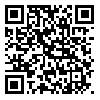
International Journal of Industrial Engineering & Production Research
Iran University of Science & Technology
Tue, May 6, 2025
[Archive]
Volume 23, Issue 4 (IJIEPR 2012)
IJIEPR 2012, 23(4): 245-251 |
Back to browse issues page
Download citation:
BibTeX | RIS | EndNote | Medlars | ProCite | Reference Manager | RefWorks
Send citation to:



BibTeX | RIS | EndNote | Medlars | ProCite | Reference Manager | RefWorks
Send citation to:
Fazel Zarandi M, Zarinbal M. Image Segmentation: Type–2 Fuzzy Possibilistic C-Mean Clustering Approach. IJIEPR 2012; 23 (4) :245-251
URL: http://ijiepr.iust.ac.ir/article-1-454-en.html
URL: http://ijiepr.iust.ac.ir/article-1-454-en.html
1- Department of Industrial Engineering, Amirkabir University of Technology, Tehran, Iran , zarandi@aut.ac.ir
2- Department of Industrial Engineering, Amirkabir University of Technology, Tehran, Iran
2- Department of Industrial Engineering, Amirkabir University of Technology, Tehran, Iran
Abstract: (7982 Views)
Image segmentation is an essential issue in image description and classification. Currently, in many real applications, segmentation is still mainly manual or strongly supervised by a human expert, which makes it irreproducible and deteriorating. Moreover, there are many uncertainties and vagueness in images, which crisp clustering and even Type-1 fuzzy clustering could not handle. Hence, Type-2 fuzzy clustering is the most preferred method. In recent years, neurology and neuroscience have been significantly advanced by imaging tools, which typically involve vast amount of data and many uncertainties. Therefore, Type-2 fuzzy clustering methods could process these images more efficient and could provide better performance. The focus of this paper is to segment the brain Magnetic Resonance Imaging (MRI) in to essential clusters based on Type-2 Possibilistic C-Mean (PCM) method. The results show that using Type-2 PCM method provides better results.
Type of Study: Research |
Subject:
Intelligent Systems
Received: 2012/07/2 | Accepted: 2014/07/21 | Published: 2014/07/21
Received: 2012/07/2 | Accepted: 2014/07/21 | Published: 2014/07/21
Send email to the article author
| Rights and permissions | |
 | This work is licensed under a Creative Commons Attribution-NonCommercial 4.0 International License. |



